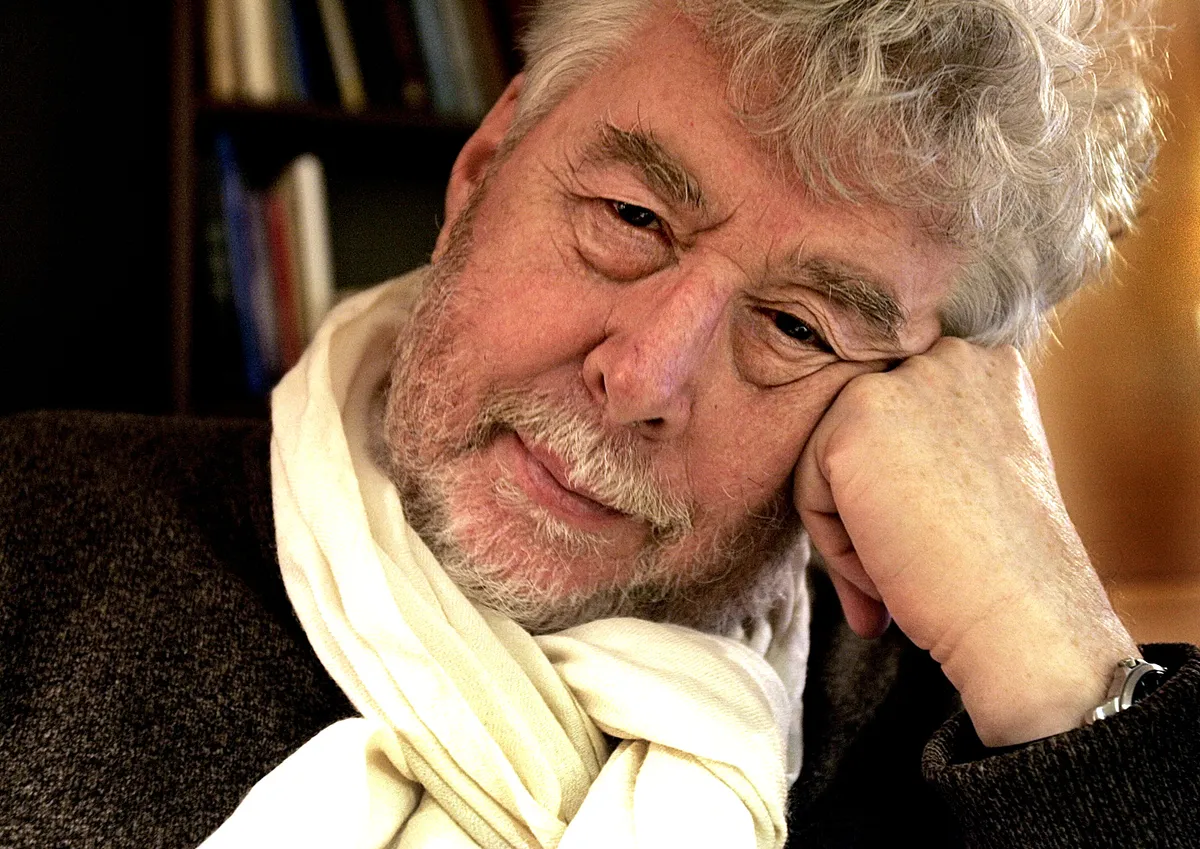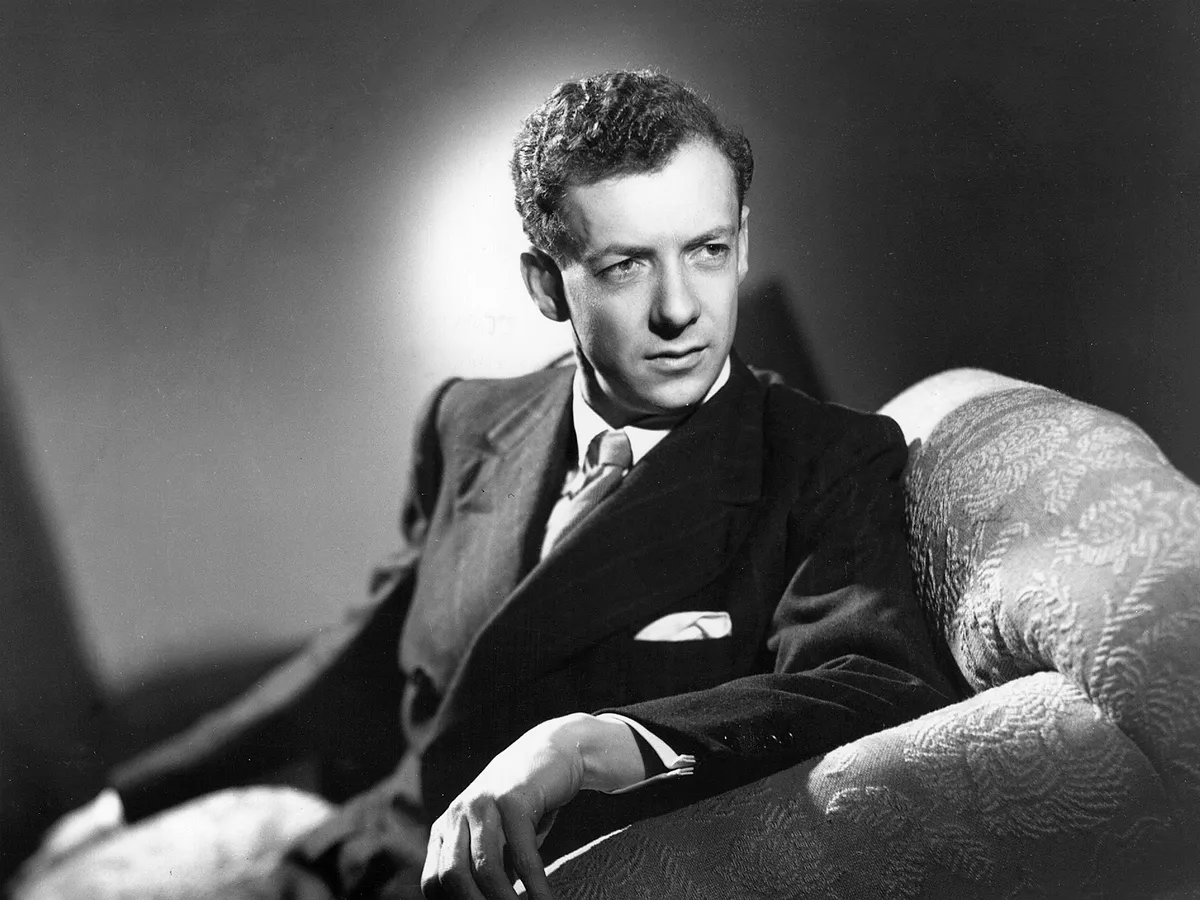When people want to praise a composer’s music they often say ‘it’s instantly recognisable’. But saying something is instantly recognisable is a back-handed compliment. It’s a quality that’s actually not so hard to achieve. You just need to invent a few ‘tricks’ or mannerisms and repeat them endlessly. Read on for our introduction to Harrison Birtwistle, one of the most genuinely individual composers of our age.
Who was Harrison Birtwistle?
Harrison Birtwistle’s music is indeed instantly recognisable, but not because it’s always the same. In fact the variety of his music is extraordinary. There’s the muffled sadness of Nenia: the Death of Orpheus, where the three clarinets and piano move hesitantly in a perpetual twilight, tinged with the silvery sound of bells. Then there’s the frightening power of his opera The Minotaur. Here, the thundering percussion and growling bass portray the power of the tormented, misunderstood beast, trapped in his labyrinth.
There’s the savage energy of The Axe Manual, where pianist and percussionist caper in a dance of weirdly off-kilter rhythms. And there’s the incredible complexity of the later orchestral works. Take Earth Dances, where the layers of music evoke natural processes unfolding at their own different speeds.
What does Harrison Birtwistle's music sound like?
So what it is that marks all these very different things out as belonging to Birtwistle and no-one else? Firstly, there’s a special kind of logic, a way of thinking in musical notes. Birtwistle was often described as a modernist, and indeed he was in the sense that he turned his back on familiar harmonies and musical gestures, and set out to create a new musical language from scratch.
That immediately made him an outsider, because reinventing music from scratch was something English composers just didn’t do. We left that to those dogmatic and forbidding Europeans, the ‘Angry Young Men’ born ten years before Birtwistle. Pierre Boulez, Luigi Nono, Karlheinz Stockhausen.
Birtwistle was undoubtedly inspired by them, just as he was inspired by modernists of earlier generations. Most prominently, Igor Stravinsky (the aloof, antique ritualism of Stravinsky’s Soldier’s Tale and Agon lie behind much of Birtwistle’s music).
Where was Harrison Birtwistle born?
Harrison Birtwistle was born on 15 July, 1934 in Accrington, Lancashire. His mother, Madge, who ran a bakery with his father Fred, encouraged him to take up the clarinet. That same year, within just over three months, English composers Edward Elgar, Gustav Holst and Frederick Delius all died.
In 1952, Birtwistle won a scholarship to the Royal Manchester College of Music. Here, with fellow students including Peter Maxwell Davies, he founded the New Music Manchester group.
Later, in 1975, Harrison Birtwistle was appointed music director of the National Theatre. He would remain there until 1983, writing music for, among others, Peter Hall’s production of Aeschylus’s Oresteia. The year 1986 saw the debut of Birtwistle's complex opera The Mask of Orpheus. Scored for vast forces that required two conductors, the work was met with great acclaim.
Birtwistle's music often met with strong reactions. In 1995, his aggressive Panic for saxophone, percussion and orchestra brought an explosion of complaints from the watching public at its Last Night of the Proms premiere.
What were Harrison Birtwistle's influences?
It was a lonely path Birtwistle chose to follow, in an English musical establishment dominated in his formative years by Michael Tippett, Malcolm Arnold and above all Benjamin Britten. To gauge Birtwistle’s distance from that world you only have to compare his first opera Punch and Judy, premiered in June 1968 at the festival co-founded by Britten, the Aldeburgh Festival, with Britten’s own most recent opera, A Midsummer Night’s Dream.
This is suffused with the gentle magic of Shakespeare’s dream-play. It's limned in harp and percussion-drenched harmonies and rhapsodically modal melodies which stretch tonal harmony but never leave it.
Birtwistle’s opera, by contrast, is blisteringly violent, just like the seaside puppet show. Much of the music is shriekingly loud and dissonant. It is said by some that Britten visited a rehearsal and strode out in disgust.

However, at another level Britten and Birtwistle shared a very English characteristic, which was a suspicion of system. Just as Britten never really engaged with the ‘12-note’ method invented by Schoenberg, Birtwistle never embraced the fearsomely intellectual systematising of those European avant-gardistes.
He was baffled by the complicated form-schemes Stockhausen used to draw before starting to compose, because for him composing was a journey into the unknown. ‘I like to be surprised by what I’m composing,’ he would say, and his music, true to that impulse, is full of surprise.

What is Birtwistle's music like?
In that respect, Birtwistle stands apart from the European modernists. What unites him with them is his determination to find a new way to compose. This he did not through ‘system’, but by focusing on the primordial stuff of music: pulse, the single note, repetition, contrast. Sometimes he explores these things in the simplest possible way, as in the Duets for Storab for two flutes, which begins with repetitions of the same note, shared between the two flutes.
Sometimes the composer took this to a fantastical degree of complication. Take Silbury Air, named after the huge man-made Neolithic hill in Wiltshire. The music launches off on E above middle C – Birtwistle’s favourite note – expressed in pulses moving at different speeds, all layered one above another. So much energy accumulates that the music bursts out of its one-note prison. Soon we immerse ourselves in a helter-skelter of many-layered activity, in which the ear gets pleasurably lost.
'Birtwistle’s music never sounds abstract; it is always earthily concrete'
The focus on simple materials means Birtwistle’s music never sounds abstract; it is always earthily concrete. And simplicity does not in any way imply crudity. It’s true that Birtwistle’s earlier works of the 1950s and ’60s, where he is struggling to find himself, are not always perfectly heard. Over the years his ear for harmony and balance became much more acute. His music never uses conventional harmonies and is never in a ‘key’. However, the weight and colour of the harmonies is a vital factor in propelling the music’s narrative.
Take the Ritual Fragment Birtwistle composed for Michael Viner, director of the London Sinfonietta and early champion of his music. The quiet opening chord has a Stravinskian quality of tense repose, which is soon obliterated by a louder chord in the winds and brass and then – emerging through the aural fog – the solemn tread of a third harmony in the piano, which grows and grows. Each is similar to the other, but interestingly different in a way that animates the solemn ritual of the music.
What are the themes in Birtwistle's music?
Ritual is a recurring theme in Birtwistle’s music, evoked by subtle designs of symmetry and repetition, which suggests the inscrutable mysteries embodied in some unknown ceremony. You feel it in the stark pattern-making of Verses for Ensembles and Tragoedia (which provided the musical basis for Punch and Judy) and in certain quiet, gentle miniatures such as Dinah and Nick’s Love Song, composed to celebrate one very familiar form of ritual, namely a wedding.
Ritual is an aspect of the other thing that makes Birtwistle’s music instantly recognisable, namely that it delineates a whole expressive world. What makes it a world rather than just a set of personal enthusiasms is that we feel these elements connect, at a very deep level. Take Birtwistle’s fondness for nature, revealed in the fact that he chose to live most of his life in remote rural locations, firstly on the Scottish island of Raasay, then in central France, and finally in Wiltshire.
The natural world is marked by cycles of recurrence, and one feels their presence in his music. This happens most memorably in the opera Gawain and the Green Knight, which contains a huge five-fold ‘Cycle of the Seasons’. Interleaved with it is another cycle of lullabies, hunting scenes and seductions.
Where did get Birtwistle get his storylines from?
That second cycle leads us back towards ritual. Nature and ritual in Birtwistle are two sides of the same coin of fatefulness, a sense of ‘this is how things must be’. The inescapability of fate surely accounts for the pervasive melancholy of much of Birtwistle’s music, expressed most powerfully in his Melencolia I, a clarinet concerto in all but name, and his first orchestral masterwork The Triumph of Time. The power of fate is a pre-eminent theme in folk-tale and myth, and it’s no accident that Birtwistle’s music draws strongly on this.
His favourite myth was undoubtedly the Orpheus myth, which gave birth to three pieces, including his single biggest achievement, the opera The Mask of Orpheus, premiered at English National Opera in 1986. But he also loved English sources, and loved to point out how symbols of England’s pagan past such as the Green Man survived well into the Christian era. Myths are often full of violence of a very male kind, which Birtwistle’s music expresses sometimes with the most spare and economical means, as in Bow Down – a retelling of the gruesome tale of the Two Sisters both in love with the same man – or with overwhelming force, as in Gawain and the Green Knight.
'A slowly unfolding continuity riven by something alien and unappeasable'
What of Birtwistle’s refusal to plan his music, and his desire to find surprise in the act of composing? Doesn’t that contradict the idea of fatefulness? Not at all. Accident and interruption can themselves take on a feeling of inevitability, and lending them that quality is precisely Birtwistle’s aim. ‘A continuity that is ruptured’ is how he described his music. Again and again, one encounters a slowly unfolding continuity riven by something alien and unappeasable, which is gradually woven into the music. Accident becomes fate.
Birtwistle’s world is an inspiring one, but there’s no denying it is utterly remote from contemporary musical culture. The complete absence of ‘relevance’ in his operas, together with the emphatically male quality of the music, its pervasive melancholy and utter refusal to fall in with the contemporary demand to be ‘accessible’ means that it is a minority taste. But for those with the patience and curiosity to venture into Birtwistle’s world, he offers something almost unique. A sense, perhaps, of being in touch with the primordial essence of music.
Harrison Birtwistle’s style
What things can we listen out for in Birtwistle's music? Here are a few key elements.
Pulse: Birtwistle loved the way musical time can contradict the remorseless ticking of real time. Several pieces juxtapose them directly. Example: Harrison’s Clocks, a set of virtuoso pieces composed for pianist Joanna MacGregor. See also the fifth of the 26 Orpheus Elegies, which actually contains a part for metronome.
Landscape: Birtwistle’s fascination with ‘ruptured continuities’ found a natural outlet in the idea of a landscape featuring intrusions, things that don’t belong. The most powerful expression of that idea is The Triumph of Time. This takes inspiration from by Bruegel’s image of a ravaged landscape with Time riding in a cart.
English folk tales: These are a constant presence in his music, from the early, obstreperous Punch and Judy, through to the quiet but violent Bow Down, the comic ‘dramatic pastoral’ Down by the Greenwood Side, and Yan Tan Tethera, a ‘mechanical pastoral’ whose title refers to numbers used by North-country shepherds to count sheep.
Verse and refrain: Alongside ritual and the cycles of nature one finds another sort of pattern-making, inspired by the literary idea of alternating verses and refrains. The most obvious examples are the early Refrains and Choruses and Verses for Ensembles. But there are also echoes in the numerous later song cycles such as Pulse Shadows.